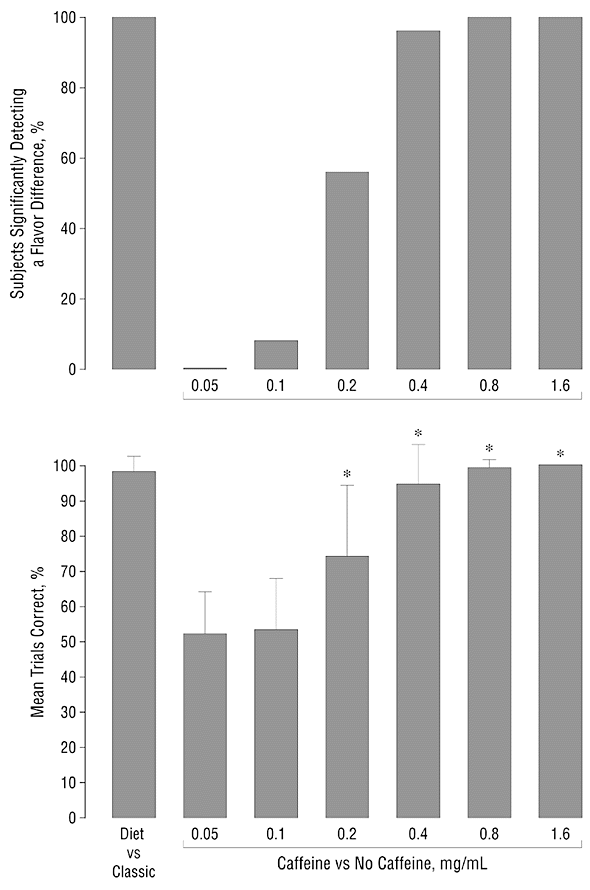
Effects of caffeine concentration on the ability to detect a flavor difference in a cola soft drink. The first bar shows the results of the screening session in which all subjects significantly detected a flavor difference between a sugar-containing cola vs a diet cola. The other bars show the results of sessions testing the detection of flavor differences between caffeinated cola and caffeine-free cola across 6 caffeine concentrations. Top, The percentage of subjects significantly detecting a flavor difference. Flavor detection was significant in a given subject if the subject was correct on 15 or more of the 20 test trials (P<.05). Bottom, Mean percentage trials correct. Bars show means; brackets show +1 SD; asterisks indicate which conditions were significantly different from chance (P<.05). The approximate caffeine concentration in the 2 most widely consumed cola soft drink products is 0.1 mg/mL.